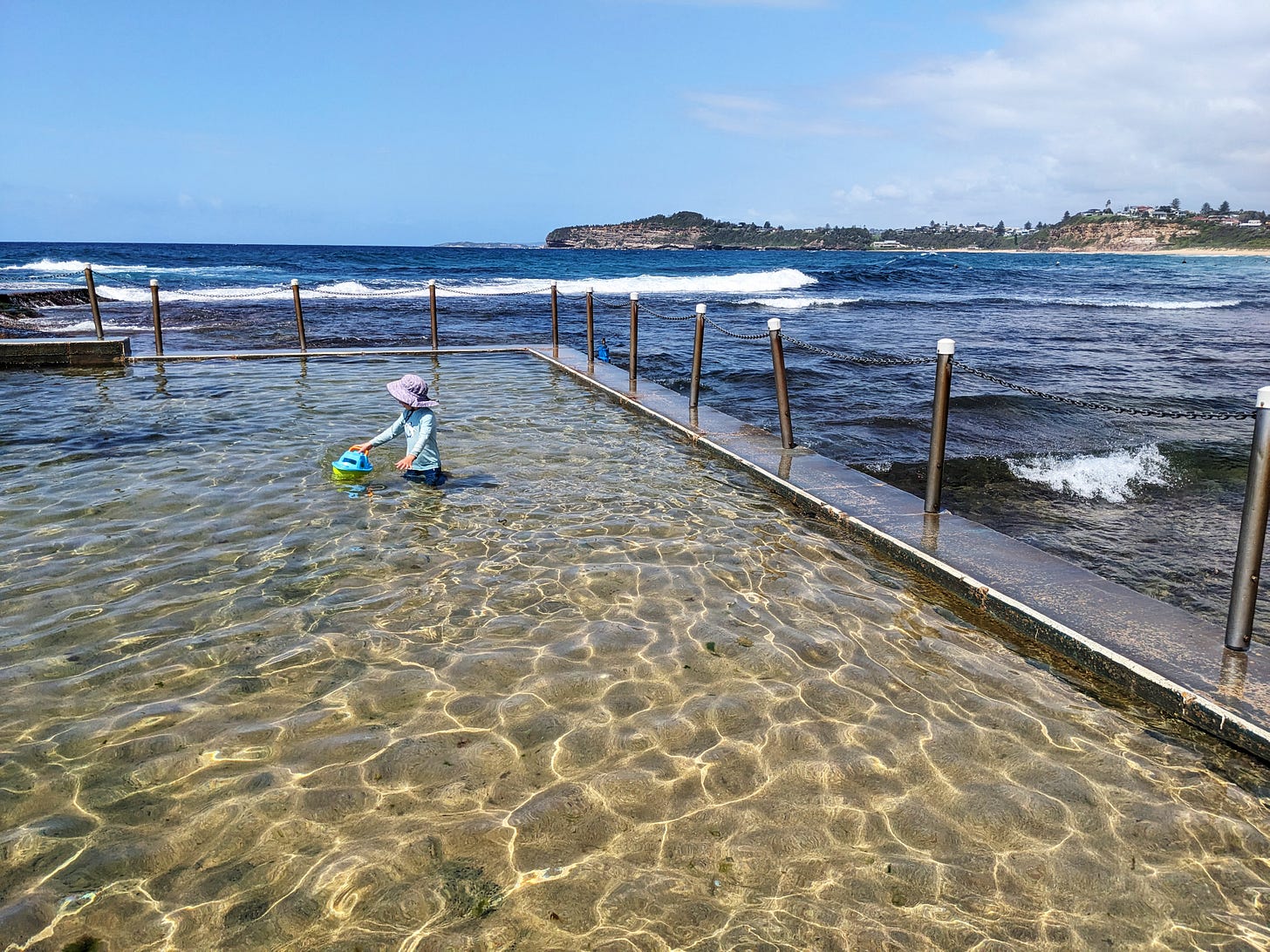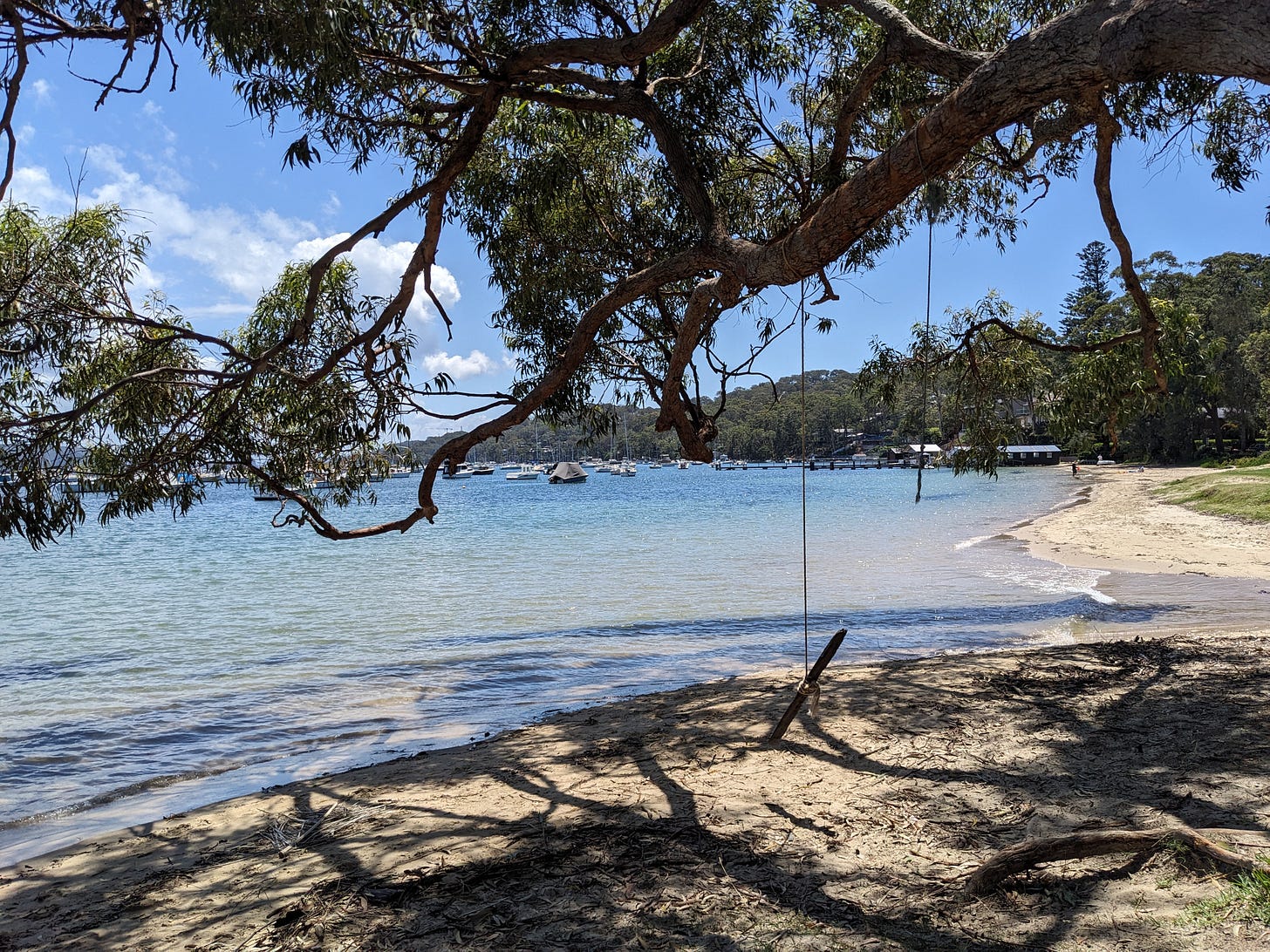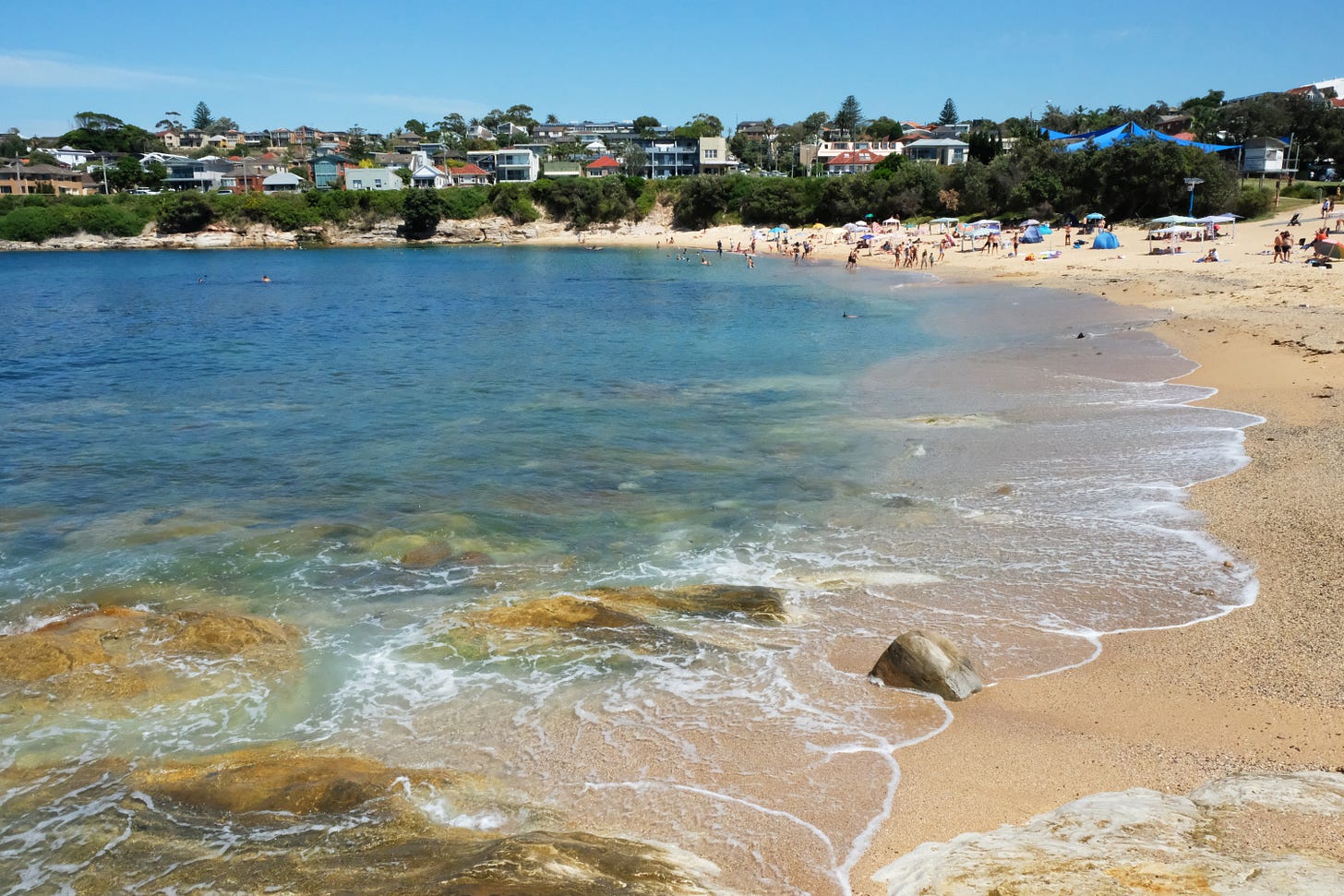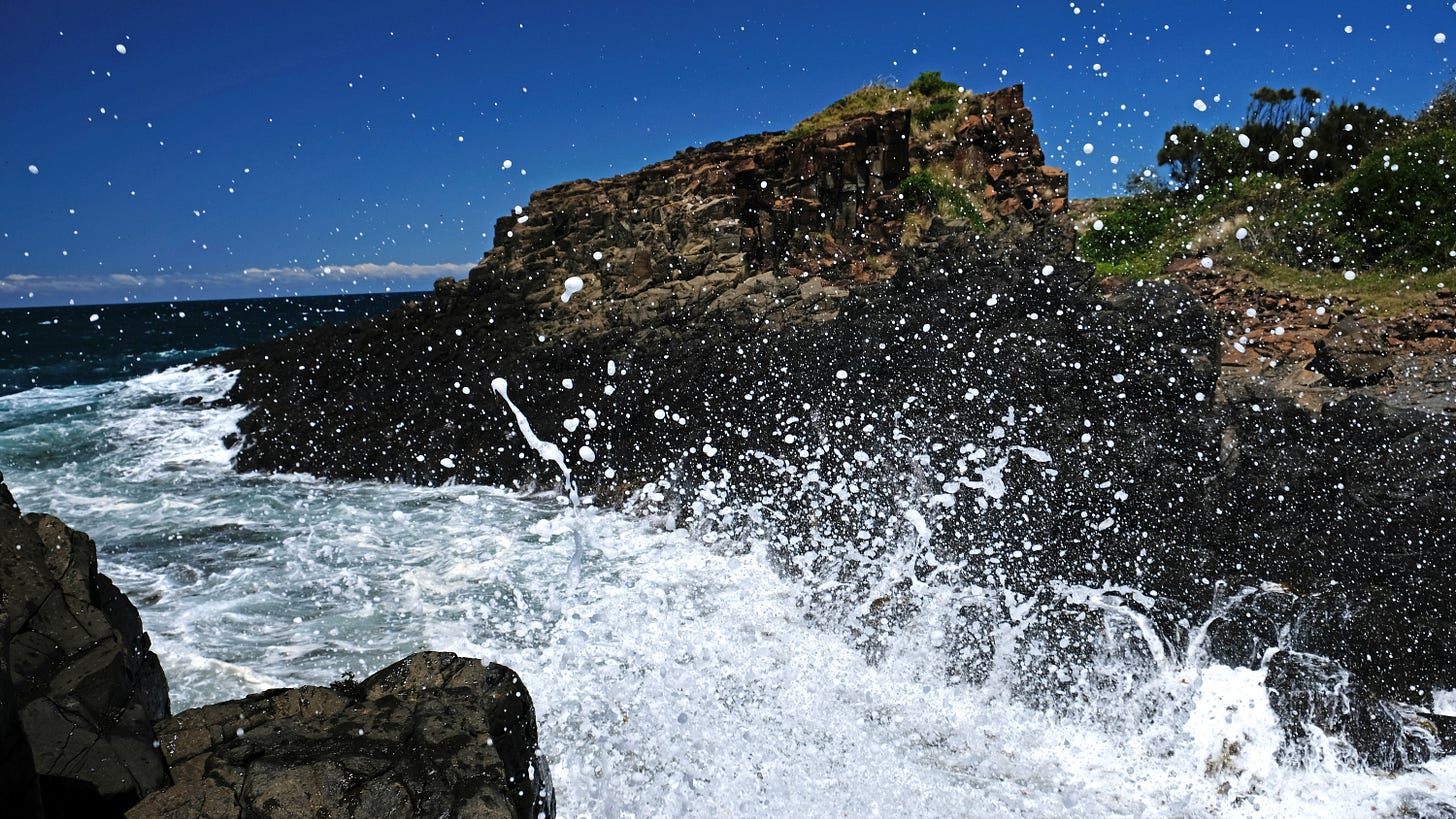Which are the best swimming beaches in Sydney?
The safe ones, I mean. Without a shark biting off your leg, or a rip current carrying you out to the open sea.
People often associate Australia with sudden deaths from shark attacks, jellyfish stings or snake bites. But the most dangerous thing in this country is actually the ocean. Not the sharks, but the currents. Drowning is a real risk, and it’s a bigger one than threats from all the dangerous animals together.
But Australia has some of the most stunning beaches in the world, paired with fine beach weather for quite a long period throughout the year. And Sydney is one of the safest places (inside Australia, I mean) to enjoy those beaches. If you choose the right ones. But which are the right ones? Let me share our family favorites with you:
Ocean pools on the Northern Beaches
The Northern Beaches is a neighborhood in Sydney, and indeed it has a wonderful selection of beaches. They’re usually long, sandy bays, tucked between dramatic headlands, and they’re quite unsheltered, with the impressive waves crashing onto the shore, sounding like a firing cannon.
You might have guessed that these beaches are not exactly for swimming. They’re some of the best surfing beaches, but swimmers won’t be disappointed either. Because each of the beaches have ocean pools built on one side (or maybe both sides) of the bay. Some of them have two separate ocean pools, one with shallow water for kids.
Ocean pools, or rockpools, as they also call them, are man-made swimming pools that are filled with ocean water. They’re open-air and free public pools, with amazing views over the bays. You almost feel like swimming in the ocean, only it’s perfectly protected.
My favorites are incredibly scenic Mona Vale Beach rockpool and South Curl Curl rockpool, both with matching kiddie pool areas.
The beaches of Pittwater
Pittwater is a large bay that flows into Broken Bay at the strait between West Head and Barrenjoey Head. Bobbing boats take advantage of the natural shelter, but there’s not too many beaches. The reason might be that its coastline gets quite muddy at low tide.
However, there are a few beaches, and they’re very sheltered, have gentle waves (or no waves at all) and shallow water. My favorite is the Clareville Beach Reserve, tucked away in a quiet residential neighborhood, backed up by a shady park.
The western side of the Pittwater is another story: it’s part of Ku-ring-gai Chase National Park. You find breathtaking, untouched sandy bays there, Resolute Beach and West Head Beach being my favorites, but they’re reachable only on foot (or by boat) and have no amenities. Nevertheless, they’re among the prettiest beaches in Sydney, and their water is quite sheltered.
Protected beaches of Sydney Harbour
Sydney has a variety of beaches that are naturally protected, many of them sitting inside Sydney Harbour. Swimming enclosures protected by shark nets are also common at these beaches.
Most of the Sydney Harbour beaches are very safe, with calm water and gentle waves, but they’re the smallest beaches in Sydney, hence often crowded. Some of them are too urban to my taste, and at some of the most sheltered ones, the water is a bit murky. But there are captivating ones, too, like world-famous Balmoral Beach, teeny-tiny Athol Beach at Bradleys Head (this one completely disappears at high tide though), Clifton Gardens Beach or the harbourside beaches of Manly.
Protected bays in the Eastern suburbs
The Eastern suburbs is home to the famous Bondi Beach and the popular beach walk from Bondi to Coogee. Along this walk you find one of the most protected coves in Sydney (outside of Sydney Harbour): Clovelly Bay.
South of the famous coastal walk, towards Cape Banks, there are other coves that are naturally protected by long headlands: Malabar Beach, Little Beach and Congwong Beach, this last one already at the entrance of Botany Bay. All of them are relatively small, sandy coves, with gentle waves.
A word of caution…
If I’m to tell you where to swim safely in Australia, I should tell you to swim only on patrolled beaches, between the red and yellow flags. But, of course, ocean baths and rockpools are not patrolled, and neither are many of the safe Sydney Harbour beaches, or wild beaches in national parks, or outside of cities and towns.
If a beach is not patrolled, your safety is solely your responsibility. So be cautious, be aware of the changing tides and weather conditions, and don’t rush into the water immediately, rather look for the signs of rip currents first:
deeper, darker water compared to the surrounding shallows
fewer breaking waves at a certain section of the beach
foamy, debris-filled path heading offshore
water flowing through narrow gaps, between sandbars or near jetties and piers
If you get caught in a rip, resist the instinct to swim against it, because this will only tire you. Try to remain calm and float on the water surface to conserve energy, and signal for help. You can also swim parallel to the shore to escape the current's grip before heading back to the beach.
That’s it.
Well, it’s a typical Aussie thing. Listing all the things that can harm you (and there are many!), describing it in detail, then telling you to chill out and enjoy the unique natural treasures of this hostile continent. And that’s what I tell you, as well.








